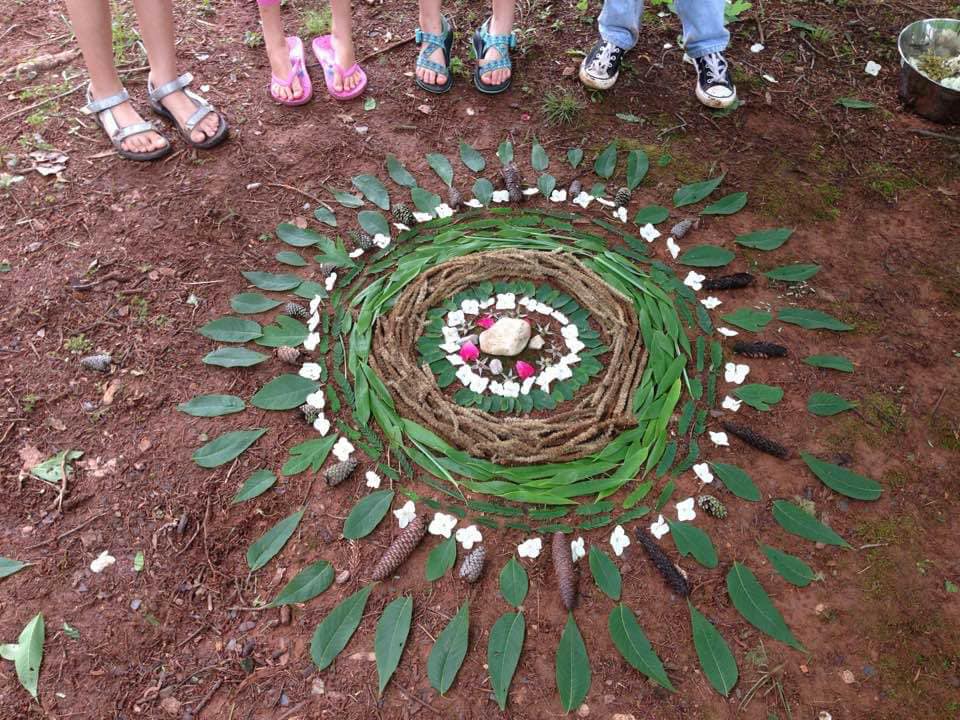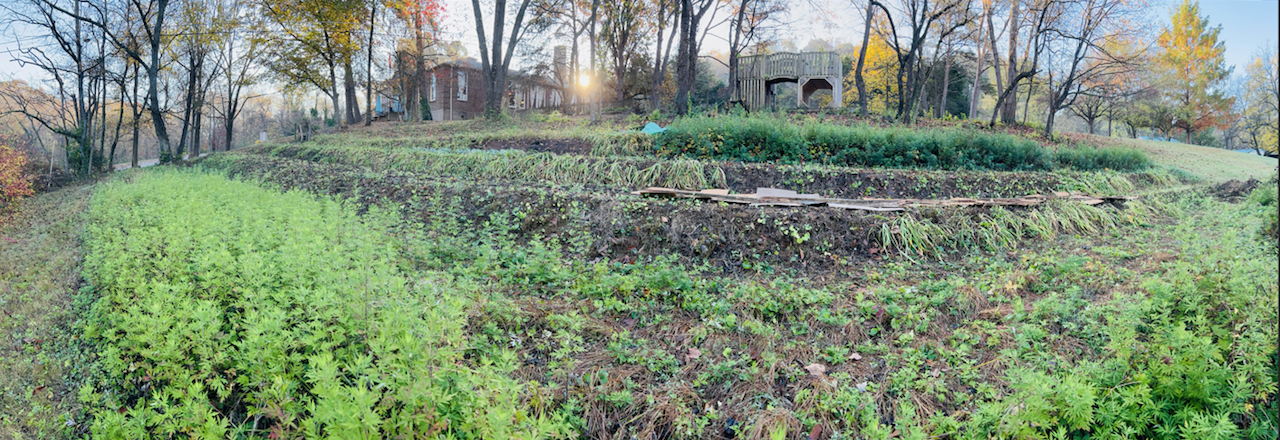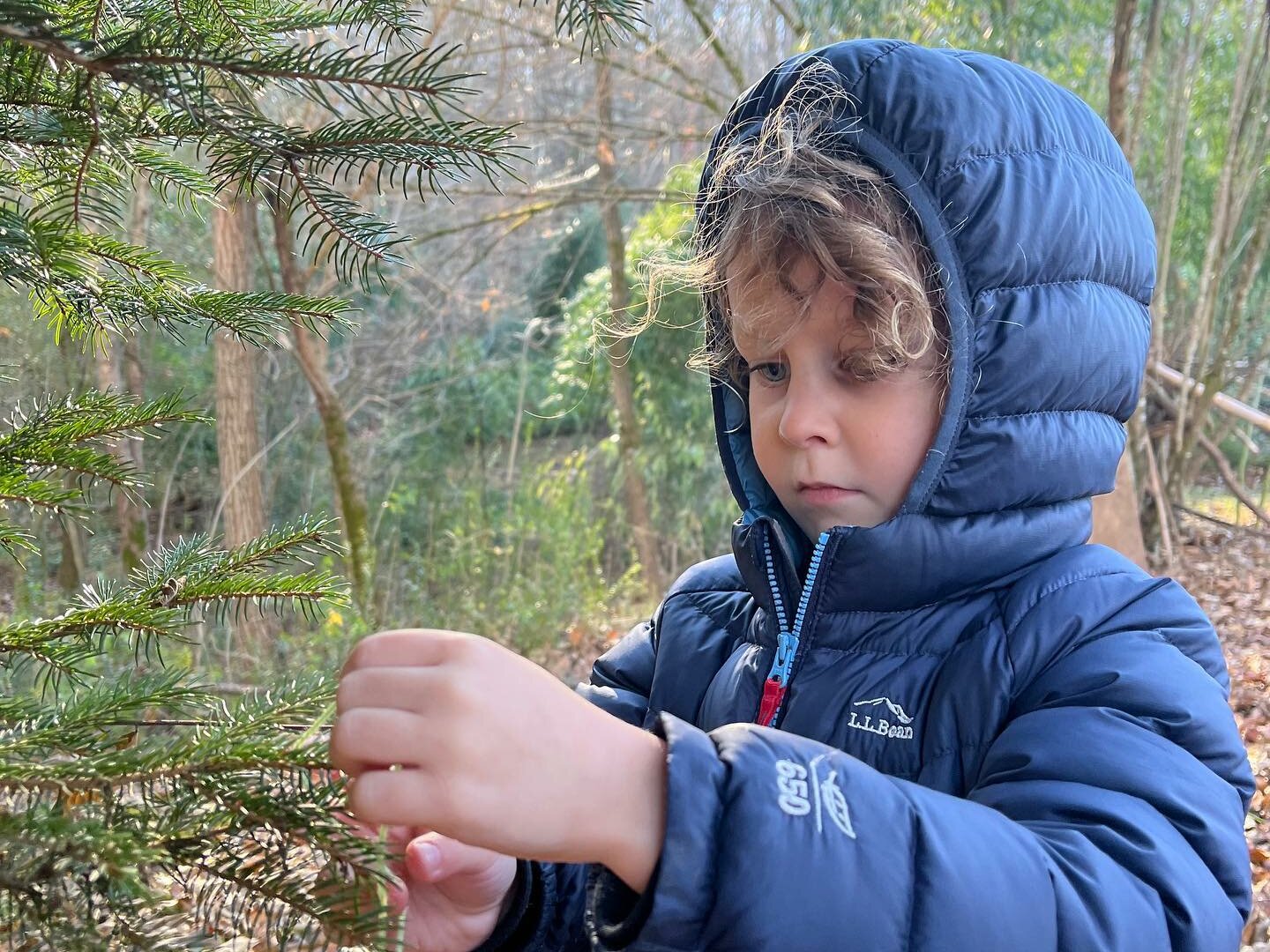The Problem
There is a large but underutilized slope between our school\\\'s playground and vegetable/flower garden terraces, where several invasive species have made themselves at home! The slope is run rampant with multiflora rose, privet, mimosa tree saplings, Himalayan blackberry, and other exotic invasive species that can cause the displacement of more ecologically sustainable vegetation.
Our Plan
After systemic removal of these exotic invasives through a combination of manual removal, sheet mulching, and spot herbicide use, we would like to install native trees, shrubs and sedges that will hold space against these invasives. Winding throughout the repopulated slope, we are planning to create a Sensory Path whose goal is to support the development of children’s self-awareness and awareness of the environment around them. The outdoors naturally challenges a child’s senses with its many colors, textures, sounds and smells. Using a combination of natural and man-made experiences (such as nature weaving, natural playscape elements, sound-making from natural objects, and more), our Path will immerse children in a journey that fosters curiosity, challenges spatial awareness skills, and helps build sensory connections in the brain. The installation of native plants is important to the success of the Sensory Path. As educators we seek to help develop within children an appreciation for the critical role native plants play in a healthy ecosystem sustained by a complex web of biological diversity. To quote Maria Montessori, “We must study the correlation between life and the environment. In nature all is correlated. This is the purpose of nature. Nature is not concerned just with the conservation of individual life or with the betterment of itself. It is a harmony, a plan of construction. Everything fits into the plan: rocks, earth, water, plants, man, etc.” We hope that the hands-on experience of planning, planting, and directly engaging with native plants along the Path will help foster a lifelong appreciation of and advocacy for their value. Additionally, we respect their importance in sustaining the wildlife with whom we share our campus, including native butterflies, moths and other beneficial insects as well as birds, reptiles and mammals. Our wishlist of native plants for the Sensory Path is chosen with not only ecological benefit in mind, but the experiential benefit of children as well. In concert with the adjacent vegetable and native flower garden beds, these plants serve to stimulate all five senses: sight, taste, hearing, smell and touch. Consideration was given to intensity, four-season interest, and contrast. Each plant brings forward its own character for exploration and examination. Examples: – The autumnal crayon-box hues and cinnamon-smelling bark of Sassafras – The festive winter stems of Arctic Fire Red Twig Dogwood – Pink Mulhly Grass’ softly wafting, cotton candy plumes – Woodland Sedge’s densely tufted texture – The late-season iridescent purple splendor of American Beautyberry – Umbrella Magnolia’s eye-poppingly large leaves – Standing Ovation Bluestream Grass’ seasonal transformations – The sculptural form of Red Bay Tree and the spicy fragrance of its leaves when crushed – Seersucker Sedge’s dimpled, lime-green leaves and curious flowers – The strawberry-banana-pineapple fragrance of Sweetshrub – The hairy stems and vibrant blossoms and fruit of Purple Flowering Raspberry All plants will be purchased from Overhill Gardens Nursery in Vonore, Tennessee (https://www.overhillgardens.com/), whose mission it is to model and encourage beautiful and sustainable landscapes by providing high quality, nursery-propagated native plants. Managing and maintaining the Sensory Path will be a collective effort among Mead Montessori School students and trained adult guides. Gardening is a naturally fulfilling type of work: Even the youngest children take great satisfaction in planting, watering, and harvesting plants which they have nurtured forth from seed. Project timeline: Fall-Winter 2022: site preparation and completion of hardscaping projects Spring 2023: purchase and installation of new native plants Summer 2023: installation of sensory exploration stations Fall-Winter 2023: full implementation of Sensory Path objectives into student curriculum


